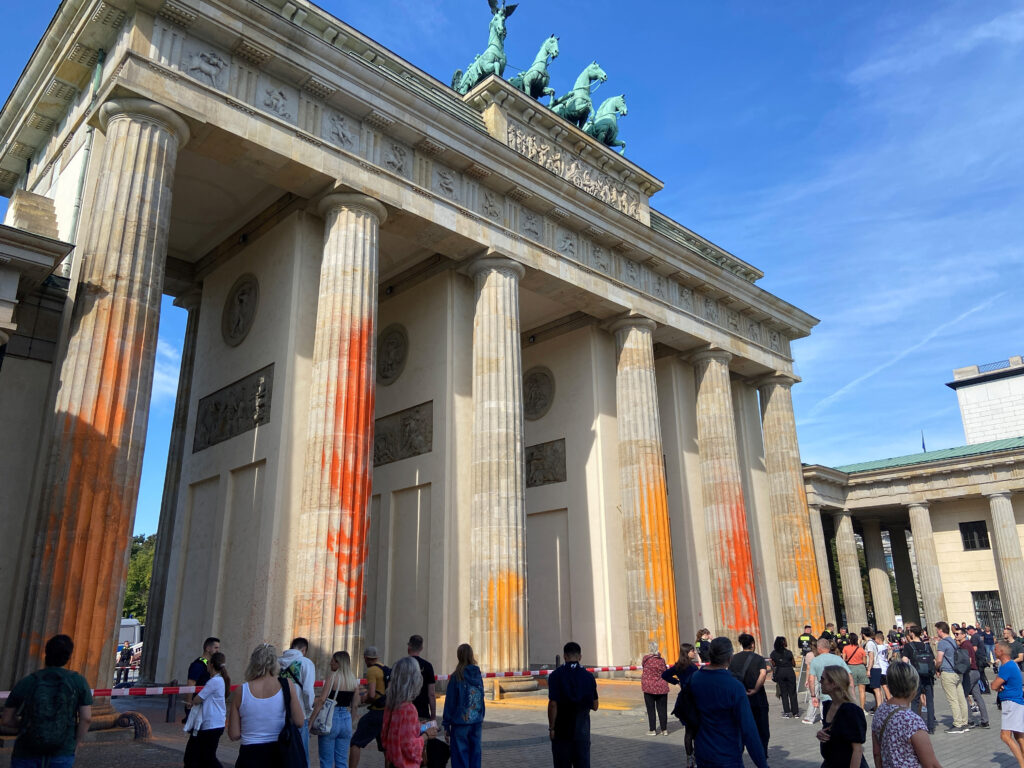Brandenburg Gate: The Timeless Symbol of Berlin
Brandenburg Gate is one of the most iconic landmarks in Europe, symbolizing Germany’s turbulent past and the reunification of a divided nation. Built in 1791, it stands as a reminder of Berlin’s long and varied history, and its unique place in the modern world.
History of Brandenburg Gate
The Brandenburg Gate was commissioned by King Frederick William II of Prussia in 1791 as a symbol of peace and unity. It was designed by the architect Carl Gotthard Langhans, and was inspired by the Propylaea, the gateway to the Acropolis in Athens, Greece. The gate is adorned with 12 Doric columns, representing the unity of the 12 German states, and topped with a Quadriga – a chariot drawn by four horses that symbolizes the triumph of peace and freedom.
The gate has been the site of numerous historical events, including the fall of the Berlin Wall in 1989, and the celebration of German reunification in 1990. It has also served as a backdrop for some of the biggest concerts, protests, and political events in recent history.
What to See and Do at Brandenburg Gate
Visitors to Brandenburg Gate can expect to find a variety of attractions and activities. The gate itself is open to the public and free to explore. There is a museum next to the gate, which houses a collection of artifacts and artwork from Germany’s history. The surrounding Pariser Platz square is also home to a variety of monuments, including the Memorial to the Murdered Jews of Europe, and the Soviet War Memorial.
For those looking to learn more about the history of the gate, there are several guided tours available. These tours will take you inside the gate, and provide interesting facts and stories about the landmark’s past.
The surrounding area is also home to a variety of restaurants, cafes, and bars, where visitors can enjoy a bite to eat or a drink after a long day of sightseeing.
Brandenburg Gate is also a popular spot for photography and other creative pursuits. It is especially beautiful at night, when the lights of the gate are illuminated.
How to Reach Brandenburg Gate
Brandenburg Gate is easily accessible by public transportation. The closest U-Bahn (metro) station is Brandenburger Tor, which is served by U55, U2, and U55. The closest S-Bahn (overground train) station is Brandenburger Tor, which is served by S3, S5, S7, and S9. There are also several bus routes that pass by the gate.
Conclusion
Brandenburg Gate is one of the most iconic landmarks in Europe, with a long and varied history. It is a symbol of unification and peace, and a reminder of Berlin’s turbulent past. It is open to the public, and visitors can explore the gate and surrounding area for free. There are also a variety of attractions and activities, and the gate is easily accessible by public transportation. Whether you’re looking for a cultural experience or a photo op, Brandenburg Gate is a must-see destination in Berlin.

